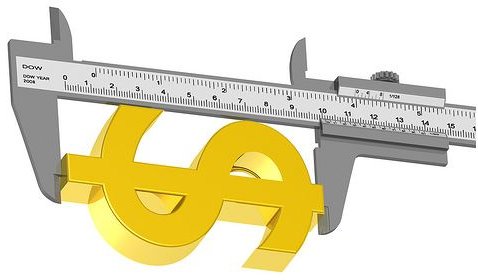What Is the Definition of Net Tangible Assets Ratio?
Net tangible assets of a company, also known as net asset value or book value, includes the total assets of the company, less
- Intangible assets such as goodwill, patents, and trademarks
- All liabilities
- Par value of preferred stock
The net tangible assets ratio shows the actual amount of tangible assets for each ordinary share of the company, and indicates the worth of each share in a company in the eventuality of liquidating all assets, and paying off all debts.
The formula to obtain the net tangible assets ratio is to divide the net tangible assets figure by the number of bonds, shares of preferred stock, or shares of common stock.
(Net Tangible Assets Ratio = Shareholder’s Equity - Intangible Assets - Preference Shares) / Total Shares
Financial ratios provide valuable information on a company’s financial health by reconciling unit differences and revealing facts hidden behind the numbers. The definition of net tangible asset ratios help investors determine the attractiveness of a company’s stock valuations and determine the company’s credit worthiness.
Image Credit: flickr.com/Brooks Elliot
Attractiveness of Stock Valuations
Among the most prominent uses of the net tangible assets ratio is to determine the attractiveness of the stock for investment.
The net asset value, book value, or net tangible assets ratio is the simplest way to evaluate a company’s stock.
The price-to-book value ratio, obtained by dividing the market value by the book value or net tangible assets ratio, indicates the amount of premium paid by the investor for each dollar of net tangible assets. It shows the accounting value of each share as opposed to the trading price or the market value of the share.
The price-to-book value ratio indicates whether the stock is overvalued or undervalued. A high price-to-book value ratio denotes over-valuation. A low price-to-book value ratio, usually during bear market phases indicates the stock trading close to the net asset value, making it an attractive buy. A price-to-book value ratio of less than one denotes an undervalued stock, which rarely happens because the book value is the floor price for the stock.
Credit Worthiness
The ratio of net tangible assets to long-term debt indicates the extent to which tangible assets of the company back up the debt. A high net tangible assets-to-long-term debt ratio means that the company has sufficient assets to liquidate in the eventuality of insolvency to satisfy creditors.
The ratio of total liabilities-to-net tangible assets measures the backing provided by the net tangible assets to all creditors, both long-term and short-term. This ratio yields a conservative estimate about the company’s debt repayment ability.
A low ratio indicates good credit worthiness. A rule of thumb for credit worthiness is a total liability-to-net tangible asset ratio of 1.5 for utilities, and a ratio of 2 for individuals and small enterprises.
The definition of net tangible assets ratio, however, provides only a preliminary indication of the company’s credit worthiness. The company’s actual performance and intangible assets such as goodwill might far surpass its tangible assets.
Reference
Hermanson, Roger H., James Don Edwards, R. F. Salmonson, (1987) Accounting Principles Volume II, Dow Jones-Irwin, p. 657. ISBN 1-55623-035-4
